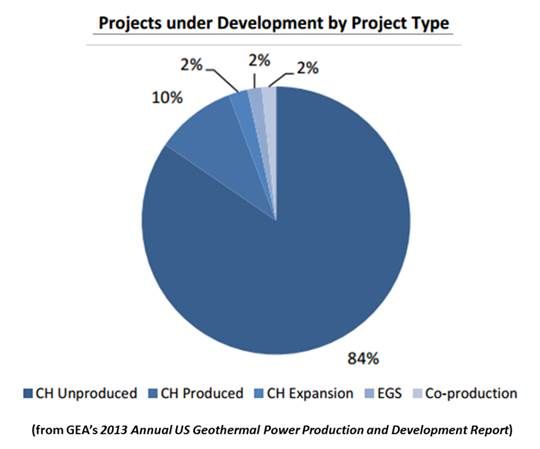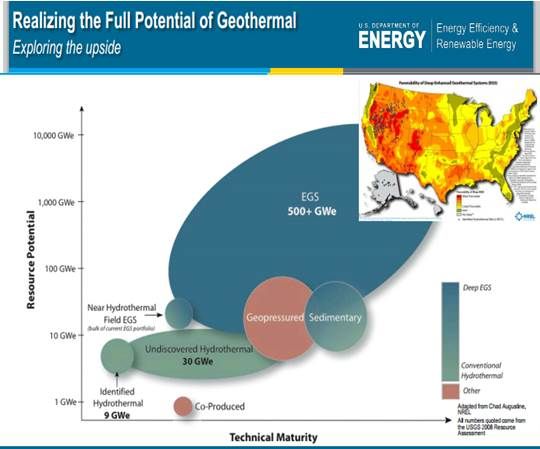Ormat (ORA) has produced 1.7 megawatts of power using enhanced geothermal methods from inside an existing geothermal field, the first power from this source to get on the electric grid.
Enhanced geothermal systems (EGS) are controversial because drilling into hot rocks deep below the earth’s surface has been associated with earthquake-like seismic tremors in Switzerland and northern California.
Of the 3,385.6 megawatts of 2012 U.S. geothermal installed capacity, which was about 0.33 percent of installed U.S. generation and 3.5 percent of U.S. renewable energy generation, none was from EGS, according to the 2013 Annual U.S. Geothermal Power Production and Development Report from the Geothermal Energy Association. But EGS technology could cut geothermal costs and eliminate significant development risks, the report said, by allowing developers “to create multiple stimulated geothermal areas from a single well.”

If proven safe, EGS could turn the earth’s deep heat into productive geothermal power, even in the absence of the kind of water reservoir adjacent to the heat source that makes a conventional hydrothermal well viable. Ideally, EGS drilling would open up existing hydrothermal fractures, allowing pumped water to reach deeper hot rocks and return the heat for power production.
The breakthrough at Ormat’s Desert Peak 2 plant in Nevada is a step in that direction. New subsurface EGS drilling technologies were used to stimulate a 38 percent power production increase from a sub-commercial conventional well.
Ormat’s Desert Peak 2 plant uses air cooling and recirculates the geothermal brine to the original aquifer to minimize water consumption.
“Our objective,” explained Ormat founder/CTO Lucien Bronicki, “was to demonstrate that this technology can have a significant impact on sub-commercial wells. This could enable us to use unproductive wells to generate more power and new revenue.”
The EGS success was the result of a four-year collaboration between Ormat, the U.S. Department of Energy and consulting firm GeothermEx, supported by a $5.4 million DOE buy-in and a $2.6 million investment by Ormat.

During an April 11 panel discussion organized by the Geothermal Energy Association (GEA) to kick off its U.S. and International Geothermal Energy Finance Forum in New York City, DOE Geothermal Technologies Office Director Doug Hollett noted there are other pilot programs reaching critical stages and proving equally successful at the Calpine Corp. (CPN) Geysers project site in California and the AltaRock Energy Newberry project site in Oregon.
“These projects are giving us a pathway to do EGS projects at lower cost, at lower risk and in the near term,” Hollett said. “Rather than EGS being that very large number that sits out there in the future, we are developing the capability to do EGS within fields, and then on the margin of fields, and gradually, as we learn more, to go after that larger target of greenfield environments.”
“I don’t want to overstate where EGS is,” GEA Executive Director Karl Gawell said. “It has some successes and the green light is on right now, but we're years away from the MIT-ideal project, decades away.”
The Desert Peak 2 success, Hollett added, “is an example of what the federal role should be. To push the boundaries and do what has not been done before. But,” he agreed, “we still have a long way to go.”



